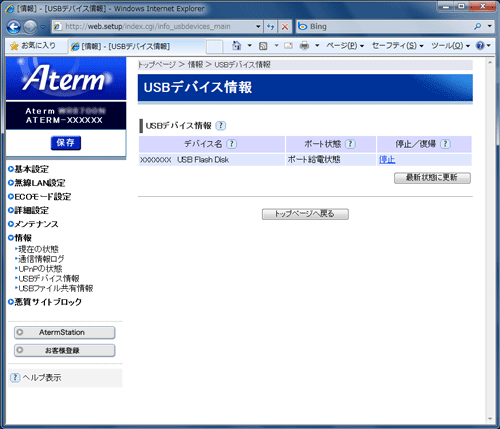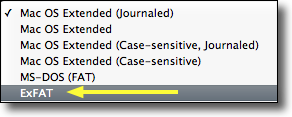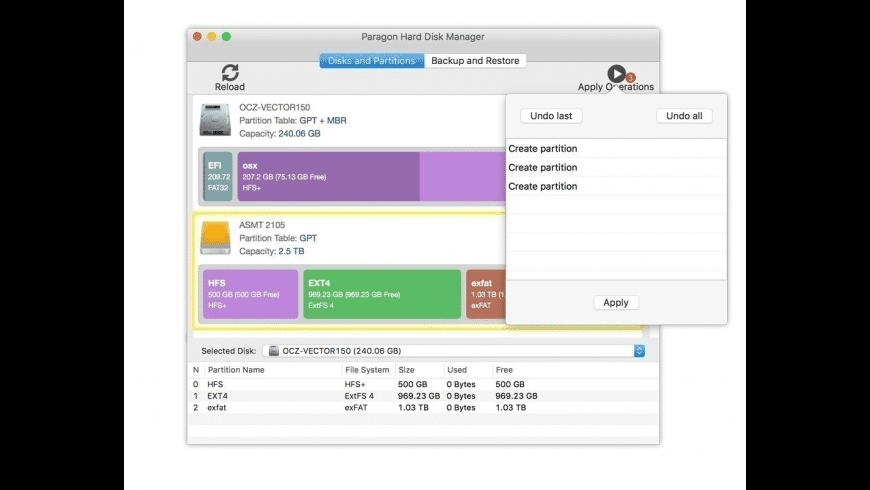How to recover ExFAT Files?
ExFAT is a famous file system developed to be supported on both Windows and Mac systems. This file system is specially developed for flash drives. It is a improved version of FAT file system. This file system was developed to meet the growing needs of file storage on different platforms. Generally, this version of file system is used where a NTFS file system is not feasible solution. There are various benefits of using an ExFAT file system over FAT. Let us discuss few of the advantages here
- It is used to exchange the information between Windows and Mac platforms in a efficient way
- Supports cluster size of 32 MiB
- Supports UTC timestamps
- Promotes transactional file system
If you are concerned about the external HD, use fsckexfat that comes with an updated version of Mac OS X Snow Leopard (Mac OS X 10.6.8), or try a free version of Linux as jaume commented. You can buy a Snow Leopard retail disk. ExFAT has been around for awhile, but we've never really talked about it. Essentially, it's a file system that's both readable and writable on any modern Mac or Windows machine (sorry, Leopard users). Nowadays, when you buy a USB drive, you can use it right out of the box with your Mac. However, unless it's been designed for use with a Mac.
Now there are different updated versions of ExFAT file system that handles advanced file formats like HD videos and high definition pictures. Though, this file system is so advanced, you will lose data from systems supporting it, due to issues like file system corruption or some errors. Don't worry!! In this page, we are specially going to deal with such issues and tips to handle it.

File system is considered to be the most vital part of a system. It is because, this file system helps you in organizing the files saved on the device in hierarchical manner. However, if a power surge causes any interruption, when ExFAT is writing some data, it might alter its file structure causing corruption. Thus the files saved on your Mac drives become inaccessible.
Some applications on your Mac store are compatible only with particular file types. At certain times, when users want to install an app that needs some other file system, people may try to reformat the Mac volume. If you convert the file system with sufficient technical knowledge, you might end up in damaging the file system, causing the loss of files from Mac machine
Accidental formatting of ExFAT drives is also one of the reasons that cause the loss of files from Mac. This happens due to user negligence and occurs at unpredictable files. So, in order to save your files in such situations, one must have to backup the data regularly.
Along with the above mentioned reasons, there are various other circumstances where a user loses his files from ExFAT drives. They are virus attack, improper system termination, logical damage, software malfunctions etc. Wondering how to recover ExFAT files from Mac machine? Don't worry!! Now with Remo Recover, you can perform ExFAT partition recovery and restore all possible data from your ExFAT drives.
Remo Recover is capable of recovering files from a formatted, inaccessible, deleted ExFAT storage drives efficiently. You can explore the features of this software by installing it on your Mac versions like Mac Lion, Mountain Lion, Mac Leopard and Snow Leopard. Moreover, this application can retrieve ExFAT files of different file extensions. It can also support recovery of files from storage devices such as internal and external hard disk, memory cards, flash drives that is installed with ExFAT file system.
Steps to use ExFAT file recovery software:-
Step 1: Install the software on your Mac machine. From the main screen select 'Recover Drives/Volumes' option as shown in figure 1

Figure 1:Main Window
Step 2: Now select 'Volume Recovery' option as illustrated in figure 2.
Figure 2: Select Volume Recovery
Step 3: Now select the ExFAT drive from where you lost the files
Figure 3: Select ExFAT Partition
Vmware image virtual machine for mac os. Step 4: After successful scan, a list of recovered files are displayed

For mac music player. Figure 4: Recovered Data
TL;DR version
For Mac OS X to read-write exFAT formatted HDD, two options
- Format using Mac:
- Disk Utility ->
- Erase ->
- choose exFAT ->
- OK
- Format using Windows:
- My Computer ->
- Right Click HDD ->
- Format ->
- choose exFAT ->
- AUS 128 kilobytes->
- Start
Background
Turns out exFAT exists so that Mac and Windows can co-exist harmoniously. There are many forum discussions and how-toarticlesoutthererecommending exFAT if you want to share files between Mac and Windows.
What most of them failed to mention is the correct allocation unit size / cluster size necessary for the harmonious relationship to work. Chrome setup. Most of them talked about what the allocation unit size does, which might be misleading for the purpose of getting it up and running seamlessly.
Can Mac Read Exfat
My Story
I want to use an external HDD as the scratch disk for a video editing project on a Mac OS X 10.7.5. But my files are on my Windows 8.1 laptop HDD, which was formatted in NTFS. By default, Mac OS X can only read but not write to NTFS HDD. Of course there are NTFS read-write solutions out there for Mac. Among them Tuxera NTFS, Paragon NTFS, or NTFS-3G FUSE.

File system is considered to be the most vital part of a system. It is because, this file system helps you in organizing the files saved on the device in hierarchical manner. However, if a power surge causes any interruption, when ExFAT is writing some data, it might alter its file structure causing corruption. Thus the files saved on your Mac drives become inaccessible.
Some applications on your Mac store are compatible only with particular file types. At certain times, when users want to install an app that needs some other file system, people may try to reformat the Mac volume. If you convert the file system with sufficient technical knowledge, you might end up in damaging the file system, causing the loss of files from Mac machine
Accidental formatting of ExFAT drives is also one of the reasons that cause the loss of files from Mac. This happens due to user negligence and occurs at unpredictable files. So, in order to save your files in such situations, one must have to backup the data regularly.
Along with the above mentioned reasons, there are various other circumstances where a user loses his files from ExFAT drives. They are virus attack, improper system termination, logical damage, software malfunctions etc. Wondering how to recover ExFAT files from Mac machine? Don't worry!! Now with Remo Recover, you can perform ExFAT partition recovery and restore all possible data from your ExFAT drives.
Remo Recover is capable of recovering files from a formatted, inaccessible, deleted ExFAT storage drives efficiently. You can explore the features of this software by installing it on your Mac versions like Mac Lion, Mountain Lion, Mac Leopard and Snow Leopard. Moreover, this application can retrieve ExFAT files of different file extensions. It can also support recovery of files from storage devices such as internal and external hard disk, memory cards, flash drives that is installed with ExFAT file system.
Steps to use ExFAT file recovery software:-
Step 1: Install the software on your Mac machine. From the main screen select 'Recover Drives/Volumes' option as shown in figure 1
Figure 1:Main Window
Step 2: Now select 'Volume Recovery' option as illustrated in figure 2.
Figure 2: Select Volume Recovery
Step 3: Now select the ExFAT drive from where you lost the files
Figure 3: Select ExFAT Partition
Vmware image virtual machine for mac os. Step 4: After successful scan, a list of recovered files are displayed
For mac music player. Figure 4: Recovered Data
TL;DR version
For Mac OS X to read-write exFAT formatted HDD, two options
- Format using Mac:
- Disk Utility ->
- Erase ->
- choose exFAT ->
- OK
- Format using Windows:
- My Computer ->
- Right Click HDD ->
- Format ->
- choose exFAT ->
- AUS 128 kilobytes->
- Start
Background
Turns out exFAT exists so that Mac and Windows can co-exist harmoniously. There are many forum discussions and how-toarticlesoutthererecommending exFAT if you want to share files between Mac and Windows.
What most of them failed to mention is the correct allocation unit size / cluster size necessary for the harmonious relationship to work. Chrome setup. Most of them talked about what the allocation unit size does, which might be misleading for the purpose of getting it up and running seamlessly.
Can Mac Read Exfat
My Story
I want to use an external HDD as the scratch disk for a video editing project on a Mac OS X 10.7.5. But my files are on my Windows 8.1 laptop HDD, which was formatted in NTFS. By default, Mac OS X can only read but not write to NTFS HDD. Of course there are NTFS read-write solutions out there for Mac. Among them Tuxera NTFS, Paragon NTFS, or NTFS-3G FUSE.
Disclaimer: I have not tried Tuxera or Paragon. I used NTFS-3G FUSE from 2009-2013 on my Macbook Snow Leopard, so far so good. I have not tried it on later versions of Mac OS X. There is a high chance of it not working on OS X 10.7 and later (see Known Issues).
Exfat For Mac Leopard Mac
Then I found out that if I format the HDD in exFAT, it should work for both Windows and OS X. I figured that since most of my files are videos with BIG file sizes, I chose 4096 kilobytes for the AUS. It formatted nicely. But lo and behold, OS X doesn't even recognize the HDD. I tried to force mount it but nope, it doesn't work.
So I figured that if I use OS X's Disk Utility to format, it should work for both Mac and Windows. This time it works! Turns out Disk Utility formatted the HDD with 128 kilobytes AUS (131072 bytes divide by 1024).
Just for kicks, I used Windows to format it again with AUS 128 kilobytes. Yeap, it works.
Exfat Mac Support
Conclusion
128 kilobytes is the harmonious constant between Windows and Mac OS X 10.7.5. Use 128 kilobytes AUS while formatting a HDD so that it works for both Windows and Mac OS X.
